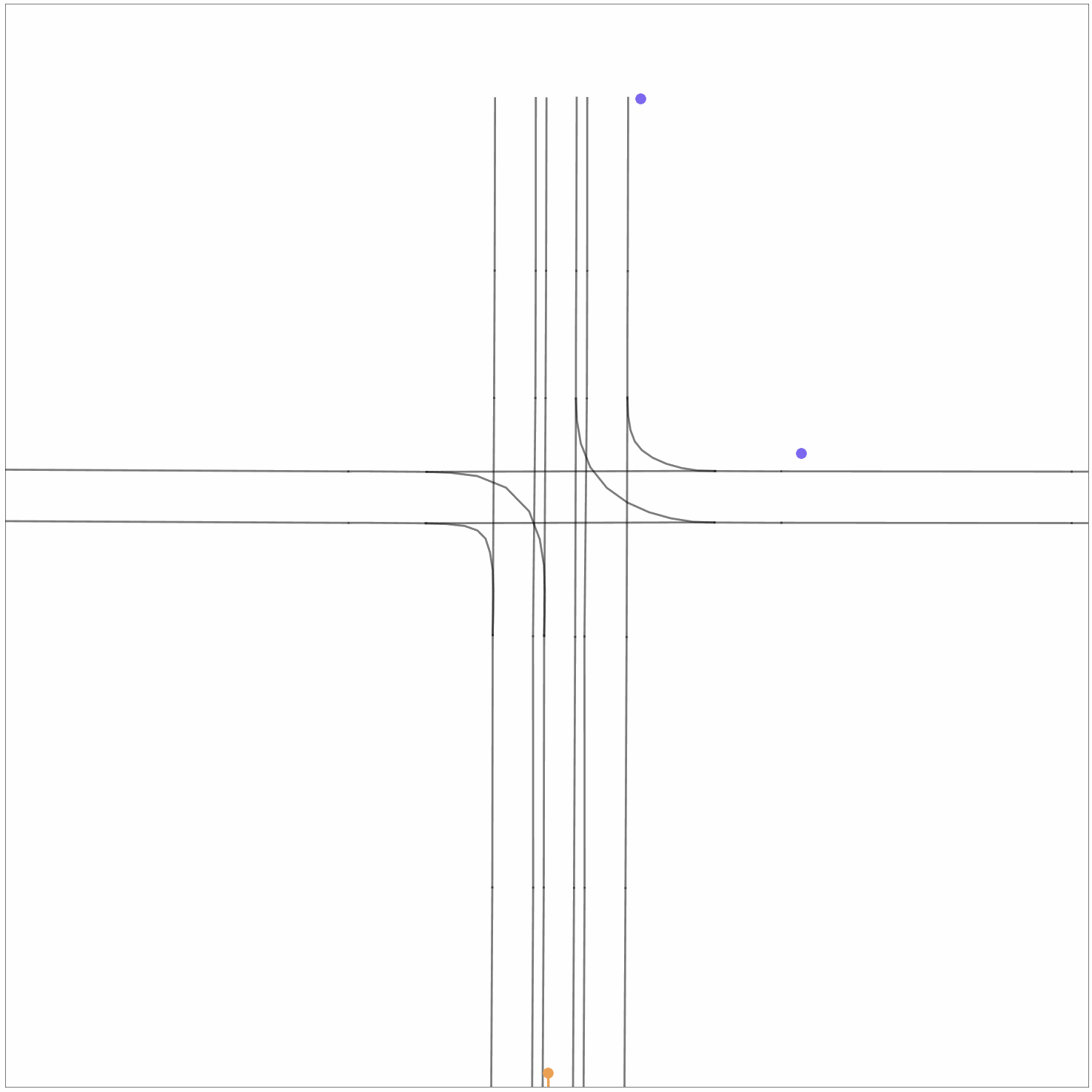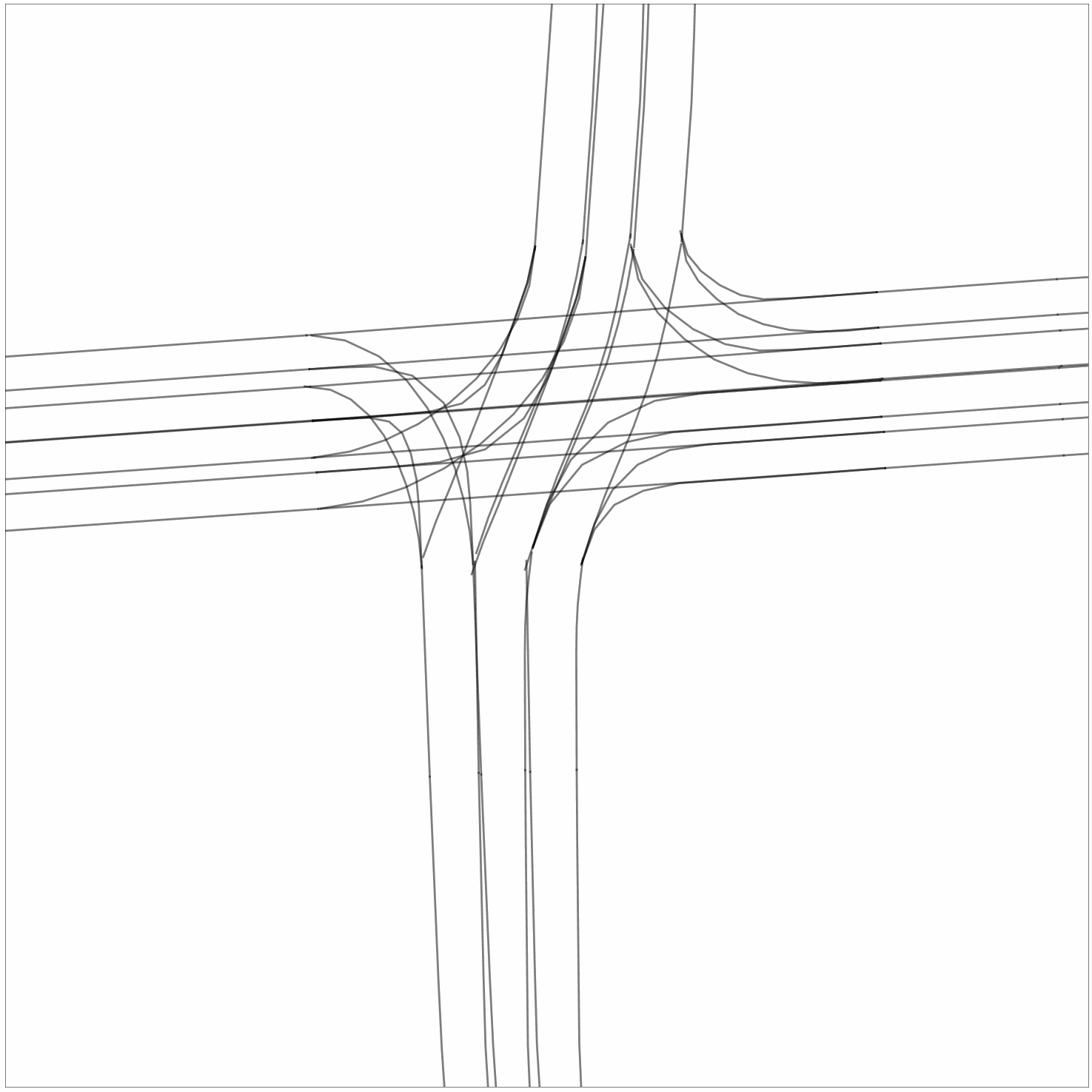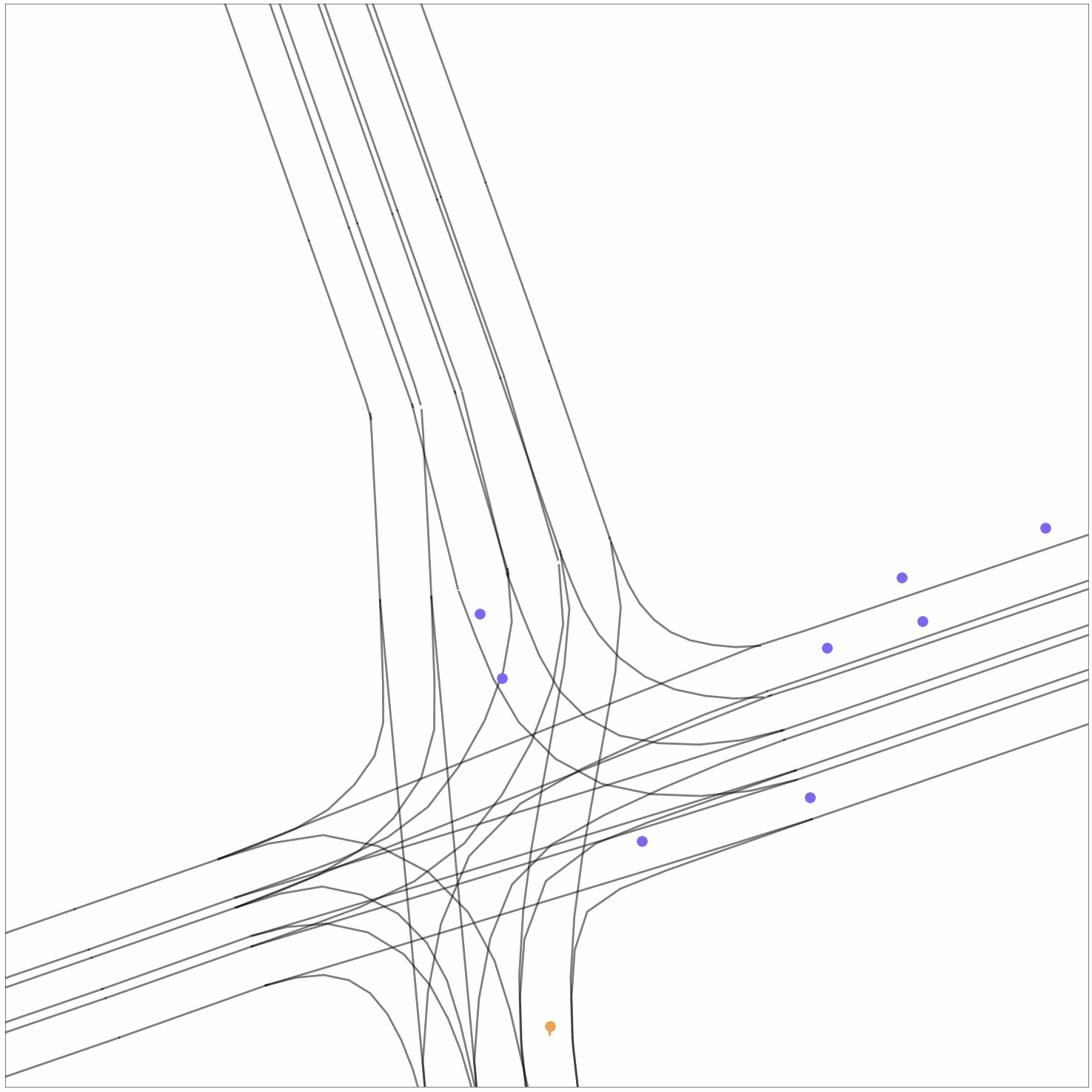This is the project page of the paper
- "FutuTP: Future-based Trajectory Prediction for Autonomous Driving"
- On Argoverse 1 motion forecasting dataset
Result on Argoverse 1 test set:
| Models | brier-minFDE_6 | minFDE_6 | minADE_6 | MR_6 |
|---|---|---|---|---|
| FutuTP | 1.84 | 1.17 | 0.77 | 0.125 |
Result on nuScenes test set:
| Models | minADE_5 | minADE_10 | MR_5 | MR_10 |
|---|---|---|---|---|
| FutuTP | 1.23 | 0.94 | 0.50 | 0.32 |
- Create a new conda virtual env
conda create --name FutuTP python=3.8
conda activate FutuTP
- Install PyTorch according to your CUDA version. We recommend CUDA >= 12.1, PyTorch >= 2.1.0.
pip install torch==2.1.0 torchvision==0.16.0 torchaudio==2.1.0 --index-url https://download.pytorch.org/whl/cu121
-
Install Argoverse 1 API, please follow argoverse-api.
-
Install nuScenes
pip install nuscenes-devkit
- Download the nuScenes dataset. This project just need the following.
- Metadata for the Trainval split (v1.0)
- Map expansion pack (v1.3)
- Organize the nuScenes root directory as follows
└── nuScenes/
├── maps/
| ├── basemaps/
| ├── expansion/
| ├── prediction/
| ├── 36092f0b03a857c6a3403e25b4b7aab3.png
| ├── 37819e65e09e5547b8a3ceaefba56bb2.png
| ├── 53992ee3023e5494b90c316c183be829.png
| └── 93406b464a165eaba6d9de76ca09f5da.png
└── v1.0-trainval
├── attribute.json
├── calibrated_sensor.json
...
└── visibility.json
- Install other dependencies
pip install -r requirements.txt
python src/datascripts/dataloader_nuscenes.py --DATAROOT path/to/nuScenes/root/directory --STOREDIR path/to/directory/with/preprocessed/data Suppose the processed training data of NuScenes is at checkpoints/nuscenes.fututp/temp_file.
OUTPUT_DIR=checkpoints/nuscenes.fututp; \
GPU_NUM=4; \
python src/train.py --do_train --future_frame_num 12 --hidden_size 64 \
--train_batch_size 32 --num_train_epochs 50 --lane_loss_weight 0.9 --topk 2 \
--distributed_training ${GPU_NUM} --output_dir ${OUTPUT_DIR} --reuse_temp_file \
--other_params \
semantic_lane direction step_lane_score enhance_global_graph point_level-4-3 \
nuscenes nuscenes_mode_num=5OUTPUT_DIR=checkpoints/nuscenes.fututp; \
GPU_NUM=4; \
MODEL_PATH=checkpoints/nuscenes.fututp/model_save/model.50.bin; \
python src/train.py --do_train --future_frame_num 12 --hidden_size 64 \
--train_batch_size 32 --num_train_epochs 50 --lane_loss_weight 0.9 --topk 2 \
--distributed_training ${GPU_NUM} --output_dir ${OUTPUT_DIR} --reuse_temp_file \
--other_params \
semantic_lane direction step_lane_score enhance_global_graph point_level-4-3 \
nuscenes nuscenes_mode_num=5 \
stage_two stage-two-train_recover=${MODEL_PATH} stage-two-epoch=50To train the model with 10 modes, you can set nuscenes_mode_num=10, --topk 4, and --num_train_epochs 100.
Suppose the processed test data of NuScenes is at checkpoints/nuscenes.fututp/temp_file.
OUTPUT_DIR=checkpoints/nuscenes.fututp; \
GPU_NUM=1; \
python src/eval.py --do_eval --future_frame_num 12 --hidden_size 64 \
--eval_batch_size 128 --topk 2 --model_recover_path 50 \
--distributed_training ${GPU_NUM} --output_dir ${OUTPUT_DIR} --reuse_temp_file \
--other_params \
semantic_lane direction step_lane_score enhance_global_graph point_level-4-3 \
nuscenes nuscenes_mode_num=5 stage_twoSuppose the training data of Argoverse 1 is at ./train/data/.
OUTPUT_DIR=checkpoints/argoverse1.fututp.s1; \
GPU_NUM=4; \
python src/train.py --do_train --data_dir ./train/data --future_frame_num 30 \
--hidden_size 128 --train_all --vector_size 32 --train_batch_size 128 --core_num 32 \
--num_train_epochs 9 --subdivide_length 5 --topk 2 --lane_loss_weight 10 --use_map \
--use_centerline --distributed_training ${GPU_NUM} --output_dir ${OUTPUT_DIR} \
--other_params \
semantic_lane direction step_lane_score enhance_global_graph point_level-4-3OUTPUT_DIR=checkpoints/argoverse1.fututp.s2; \
GPU_NUM=4; \
MODEL_PATH=checkpoints/argoverse1.fututp.s1/model_save/model.9.bin; \
python src/train.py --do_train --data_dir ./train/data --future_frame_num 30 \
--hidden_size 128 --train_all --vector_size 32 --train_batch_size 128 --core_num 32 \
--num_train_epochs 9 --subdivide_length 5 --topk 2 --lane_loss_weight 10 --use_map \
--use_centerline --distributed_training ${GPU_NUM} --output_dir ${OUTPUT_DIR} --learning_rate 0.0003 \
--other_params \
semantic_lane direction step_lane_score enhance_global_graph point_level-4-3 \
stage_two stage-two-train_recover=${MODEL_PATH} stage-two-epoch=9Suppose the validation data of Argoverse motion forecasting is at ./val/data/.
OUTPUT_DIR=checkpoints/argoverse1.fututp.s2; \
GPU_NUM=1; \
python src/eval.py --do_eval --data_dir_for_val ./val/data/ --future_frame_num 30 \
--hidden_size 128 --vector_size 32 --eval_batch_size 128 --core_num 16 \
--subdivide_length 5 --topk 2 --use_map --use_centerline --model_recover_path 9 \
--distributed_training ${GPU_NUM} --output_dir ${OUTPUT_DIR} \
--other_params \
semantic_lane direction step_lane_score enhance_global_graph point_level-4-3 stage_twoThis repository is licensed under MIT license.


